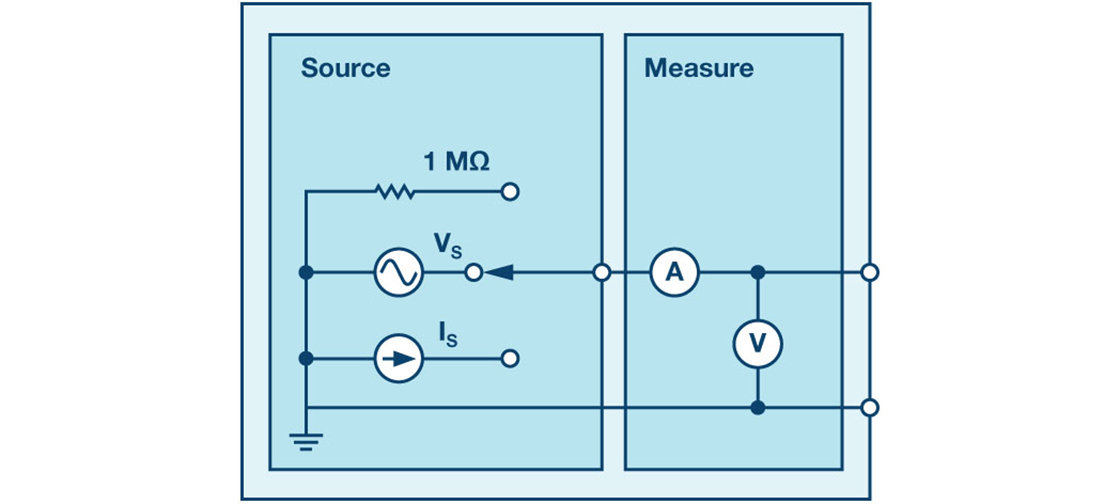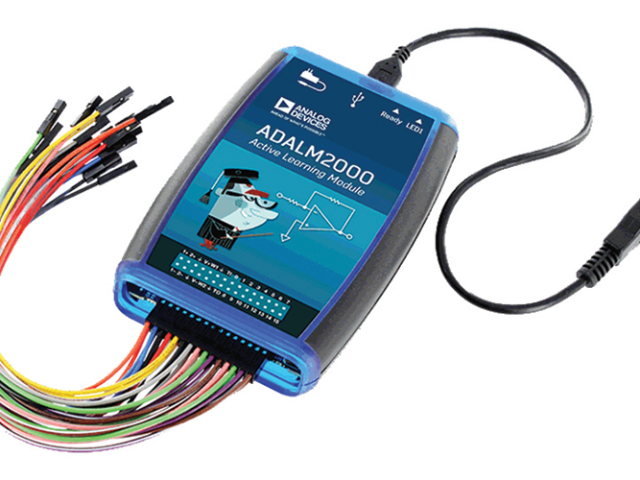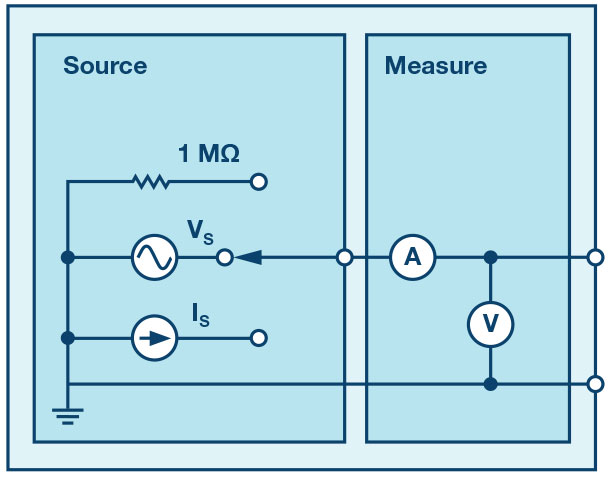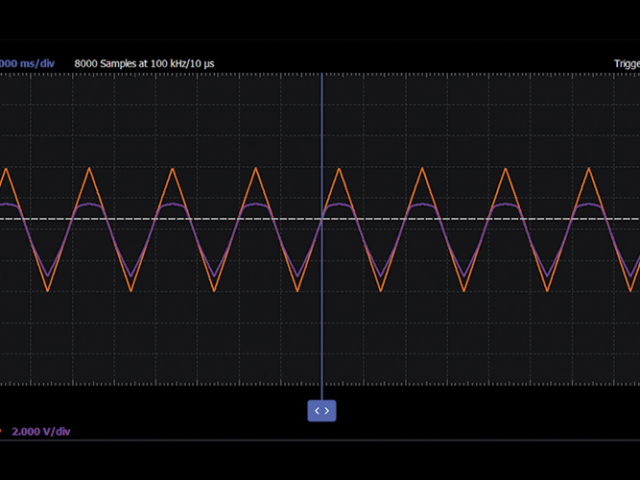After the introduction of the SMU ADALM1000 let’s continue with the fourth part of our series with some small, basic measurements.
By Doug Mercer and Antoniu Miclaus, Analog Devices
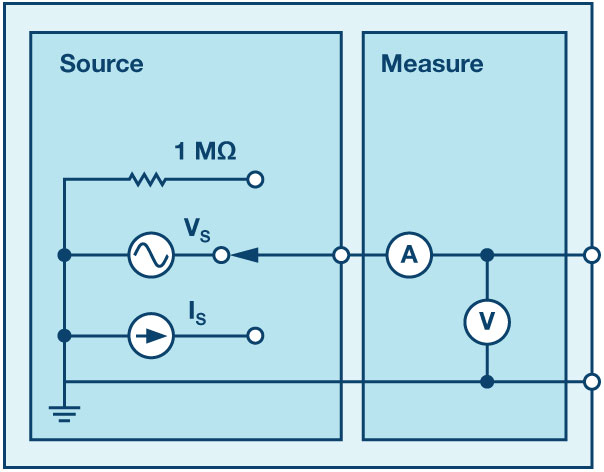
Now let’s get started with the next experiment.
Objective:
The objective of this lab activity is to study the transient response of a series RC circuit and understand the time constant concept using pulse waveforms.
Background:
In this lab activity, you will apply a pulse waveform to the RC circuit to analyze the transient response of the RC circuit. The pulse width relative to a circuit’s time constant determines how it is affected by an RC circuit.
Time Constant (): A measure of time required for certain changes in voltages and currents in RC and RL circuits. Generally, after four time constants (), the capacitor in the RC circuit is virtually fully charged and the voltage across the capacitor is now approximatively at 98% of its maximum value. This interval is considered to be the transient response of the RC circuit. When the elapsed time exceeds five time constants () after switching has occurred, the currents and voltages have reached their final value, which is also called steady-state response.
Table 1 shows the voltage and current percentage values for the capacitor in the RC charging circuit at a given time constant while charging.
Table 1. Voltage and Current Percentage Values for Given Time Constant
|
Time Constant (τ) |
Percentage of Maximum | |
| Voltage | Current | |
| 0.5 τ | 39.3% | 60.7% |
| 0.7 τ | 50.3% | 49.7% |
| τ | 63.2% | 36.8% |
| 2 τ | 86.5% | 13.5% |
| 3 τ | 95.0% | 5.0% |
| 4 τ | 98.2% | 1.8% |
| 5 τ | 99.3% | 0.7% |
Note that the capacitor will never become 100% charged in reality. Therefore, five time constants are used to consider a capacitor fully charged for all practical purposes.
The time constant of an RC circuit is the product of equivalent capacitance and the Thévenin resistance as viewed from the terminals of the equivalent capacitor.
A pulse is a voltage or current that changes from one level to another and back again. If a waveform’s high time equals its low time it is called a square wave. The length of each cycle of a pulse is its period ().
The pulse width () of an ideal square wave is equal to half the time period.
The relation between pulse width and frequency is then given by,
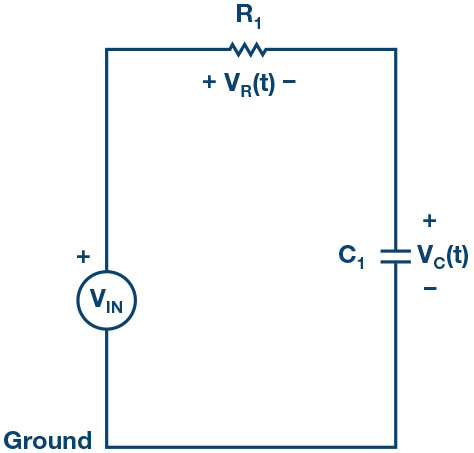
From Kirchhoff’s laws, it can be shown that the charging voltage across the capacitor is given by:
where is the applied source voltage to the circuit for , and is the time constant.
The transient response curve of RC circuit increases and is shown in Figure 3.
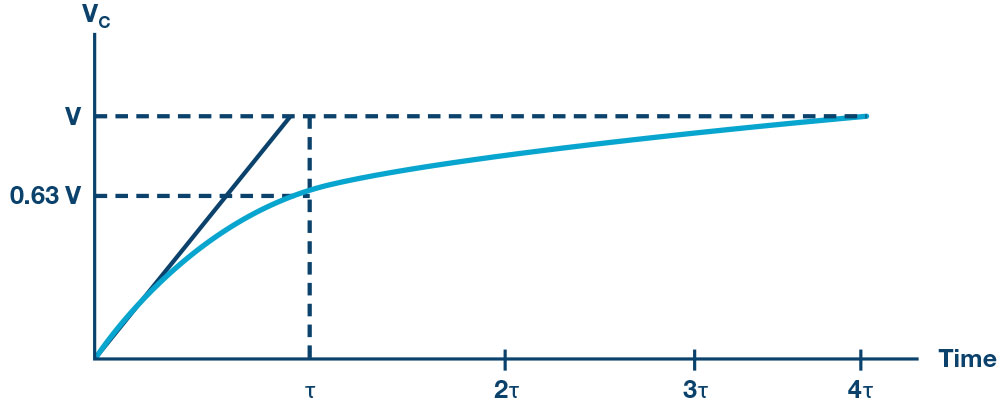
The discharge voltage for the capacitor is given by:
Where is the initial voltage stored in capacitor at , and is time constant. The response curve is a decaying exponential as shown in Figure 4.
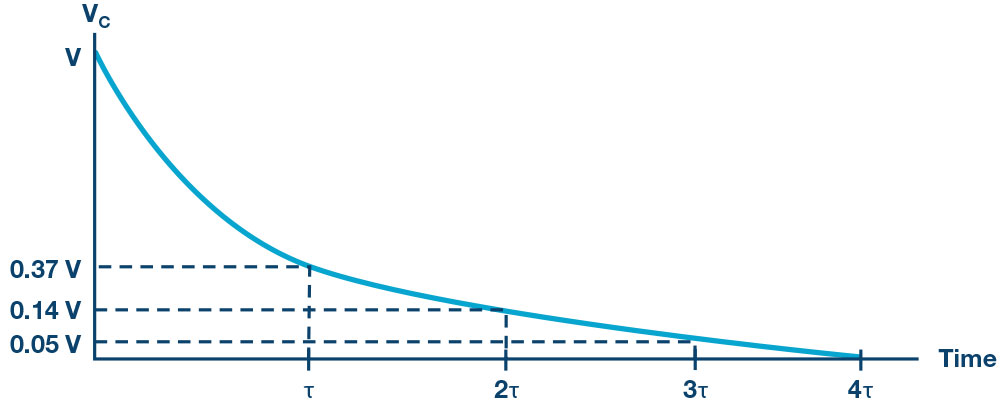
Materials:
- ADALM1000 hardware module
- Resistors (, )
- Capacitors (, )
Procedure:
1. Set up the circuit shown in Figure 5 on your solderless breadboard with the component values and . Open the ALICE Oscilloscope software.
2. Set the Channel A arbitrary waveform generator (AWG) Min value to 0.5 V and the Max value to 4.5 V to apply a 4 V p-p square wave centered on 2.5 V as the input voltage to the circuit. From the AWG A Mode drop down menu, select the SVMI mode. From the AWG A Shape drop down menus select Square. From the AWG B Mode drop down menu, select the Hi-Z mode.
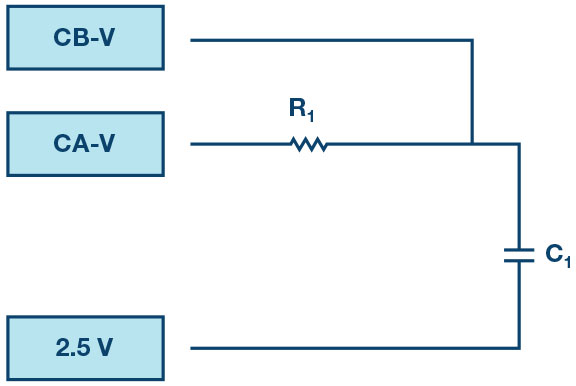
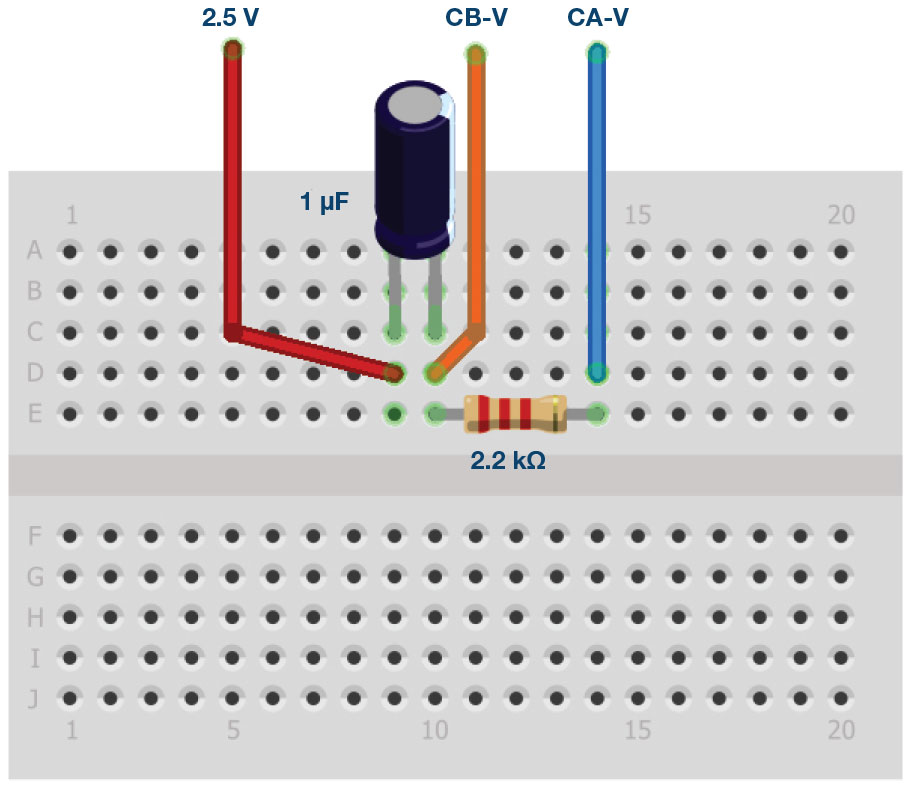
3. From the ALICE Curves drop down menu, select CA-V and CB-V for display. From the Trigger drop down menu, select CA-V and Auto Level. Adjust the time base until you have at approximately two cycles of the square wave on the display grid.
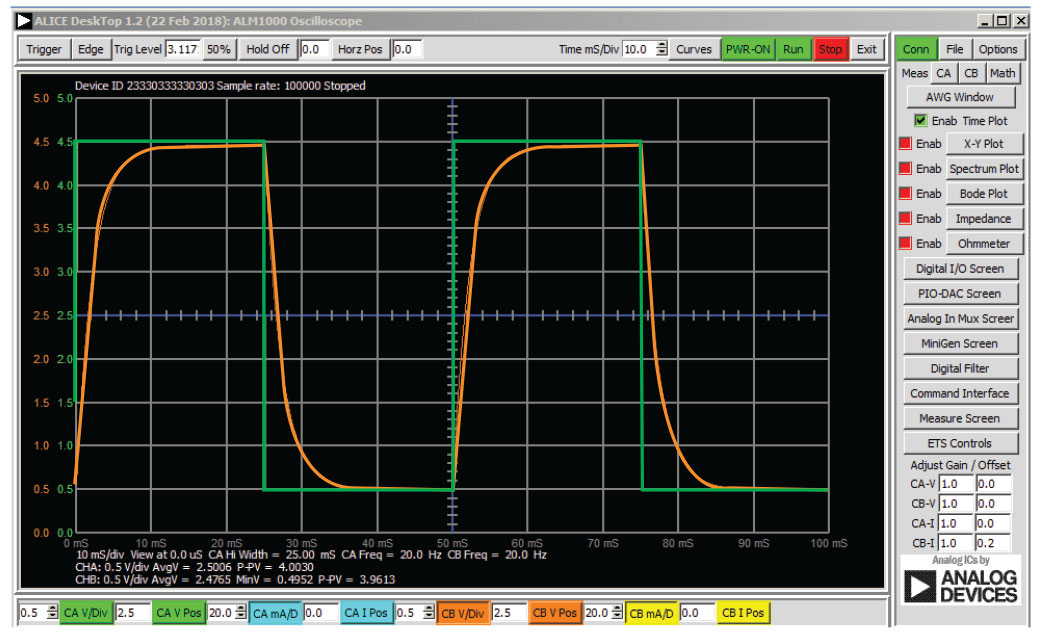
This configuration uses the oscilloscope to look at the input of the circuit on Channel A and the output of the circuit on Channel B. Make sure you have checked the Sync AWG selector.
4. Observe the response of the circuit for the following three cases and record the
-
-
- Pulse width : Set the frequency of AWG A output such that the capacitor has enough time to fully charge and discharge during each cycle of the square Let the pulse width be and set the frequency according to Equation 2. The value you have found should be approximately 15 Hz. Determine the time constant from the waveforms obtained on the screen if you can. If you cannot obtain the time constant easily, explain possible reasons.
- Pulse width : Set the frequency such that the pulse width (this should be approximately 45 Hz). Since the pulse width is , the capacitor should just be able to fully charge and discharge during each pulse cycle (see Figure 3 and Figure 4).
-
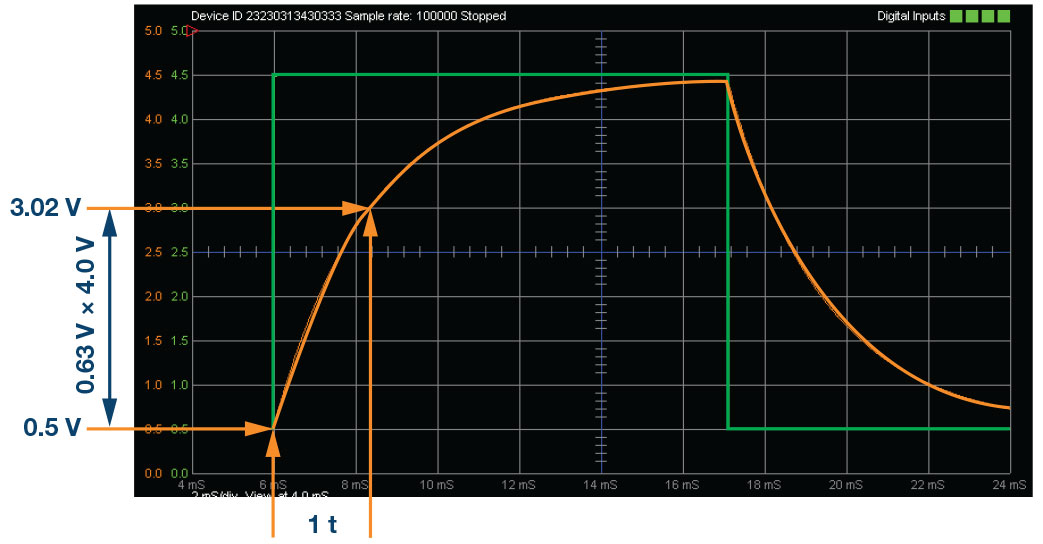
-
-
- Pulse width : In this case the capacitor does not have time to charge significantly before it is switched to discharge, and vice versa. Let the pulse width be only in this case and set the frequency.
-
5. Repeat the procedure using and and record the measurements.
Questions:
- Calculate the time constant () using Equation 1 and compare it to the measured value from 4b ( and ).
- Repeat this for another set of values, and . You can find the answers at the StudentZone blog.
Notes
As in all the ALM labs, we use the following terminology when referring to the connections to the ALM1000 connector and configuring the hardware. The green shaded rectangles indicate connections to the ADALM1000 analog I/O connector. The analog I/O channel pins are referred to as CA and CB. When configured to force voltage/measure current, –V is added (as in CA-V) or when configured to force current/measure voltage, –I is added (as in CA-I). When a channel is configured in the high impedance mode to only measure voltage, –H is added (as in CA-H).
Scope traces are similarly referred to by channel and voltage/current, such as CA-V and CB-V for the voltage waveforms, and CA-I and CB-I for the current waveforms.
We are using the ALICE Rev 1.1 software for those examples here. File: alice-desktop-1.1-setup.zip. Please download here.
The ALICE desktop software provides the following functions:
- A 2-channel oscilloscope for time domain display and analysis of voltage and current
- The 2-channel arbitrary waveform generator (AWG) controls.
- The X and Y display for plotting captured voltage and current voltage and current data, as well as voltage waveform histograms.
- The 2-channel spectrum analyzer for frequency domain display and analysis of voltage
- The Bode plotter and network analyzer with built-in sweep generator.
- An impedance analyzer for analyzing complex RLC networks and as an RLC meter and vector
- A dc ohmmeter measures unknown resistance with respect to known external resistor or known internal 50 Ω.
- Board self-calibration using the AD584 precision 2.5 V reference from the ADALP2000 analog parts kit.
- ALICE M1K voltmeter.
- ALICE M1K meter source.
- ALICE M1K desktop tool.
For more information, please look here.
Note: You need to have the ADALM1000 connected to your PC to use the software.
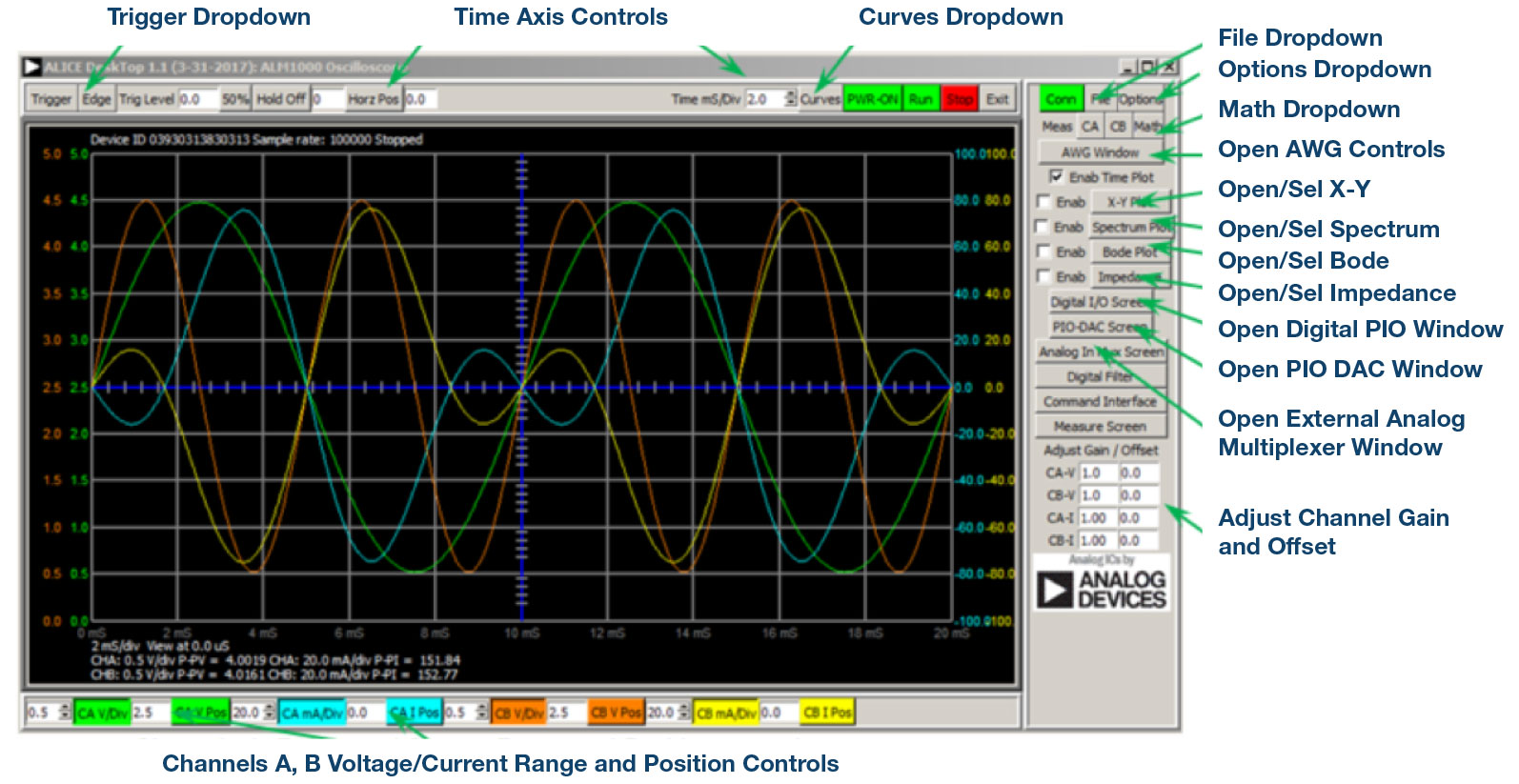
Authors:
Doug Mercer [doug.mercer@analog.com] received his B.S.E.E. degree from Rensselaer Polytechnic Institute (RPI) in 1977. Since joining Analog Devices in 1977, he has contributed directly or indirectly to more than 30 data converter products and he holds 13 patents. He was appointed to the position of ADI Fellow in 1995. In 2009, he transitioned from full-time work and has continued consulting at ADI as a Fellow Emeritus contributing to the Active Learning Program. In 2016 he was named Engineer in Residence within the ECSE department at RPI.
Antoniu Miclaus [antoniu.miclaus@analog.com] is a system applications engineer at Analog Devices, where he works on ADI academic programs, as well as embedded software for Circuits from the Lab® and QA process management. He started working at Analog Devices in February 2017 in Cluj-Napoca, Romania. He is currently an M.Sc. student in the software engineering master’s program at Babes-Bolyai University and he has a B.Eng. in electronics and telecommunications from Technical University of Cluj-Napoca.

